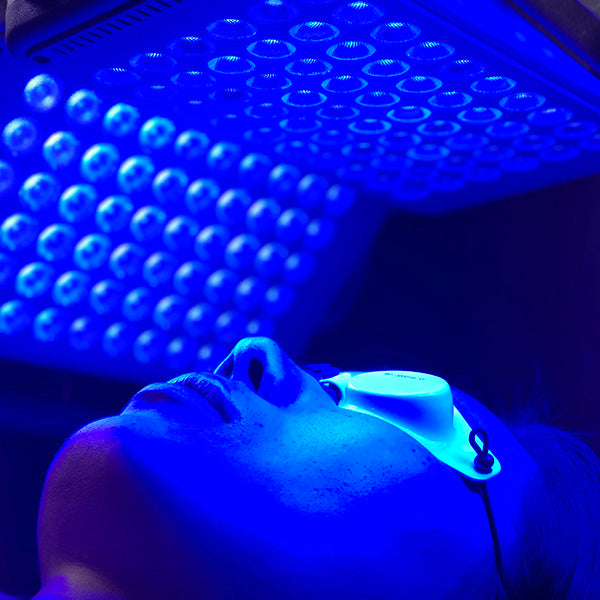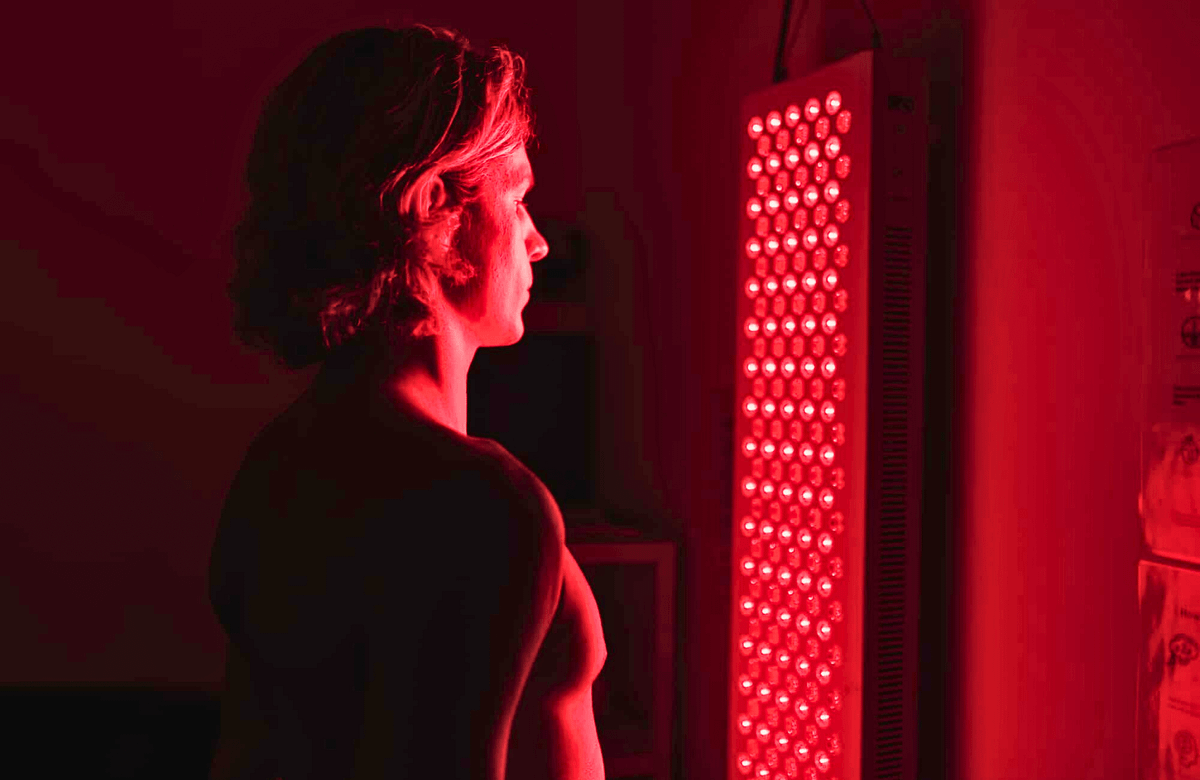Originating the Future of Wellness: A Closer Take A Look At Photobiomodulation
Wiki Article
Unlocking the Prospective of Photobiomodulation: A Promising Strategy for Therapeutic Intervention
Are you curious concerning the capacity of photobiomodulation for healing treatment? Think of a situation where an individual experiencing chronic discomfort locates alleviation through a non-invasive treatment that uses light. This is specifically what photobiomodulation deals. It is a promising method that takes advantage of the power of light to boost recovery and reduce inflammation in various medical conditions. By targeting particular cellular processes, photobiomodulation has shown potential in speeding up wound healing, decreasing pain, and promoting tissue regeneration. In this introduction, we will check out the systems of activity, applications in medicine, and the present evidence supporting the efficacy of photobiomodulation. Additionally, we will certainly review future instructions and potential difficulties in opening its complete possibility as a healing treatment.Recognizing Photobiomodulation
To understand photobiomodulation, you require to realize the idea of how light treatment can straight affect cellular processes in your body. Photobiomodulation, additionally understood as low-level light therapy, is a non-invasive therapy that uses particular wavelengths of light to boost biochemical reactions in your cells. When exposed to these light wavelengths, your cells absorb the power and transform it into mobile power, referred to as adenosine triphosphate (ATP) This increase in ATP manufacturing results in a waterfall of cellular feedbacks, including boosted metabolic rate, improved blood circulation, and enhanced manufacturing of collagen and other healthy proteins.The restorative results of photobiomodulation are far-reaching and have been researched extensively in various clinical fields. It has shown promising lead to promoting tissue fixing and regeneration, lowering swelling, relieving discomfort, and enhancing wound recovery. Moreover, photobiomodulation has been located to have a favorable impact on neurological conditions, such as traumatic brain injury and stroke, by boosting neural task and promoting neuroplasticity.
Among the vital benefits of photobiomodulation is its safety and security profile. Unlike other therapies, photobiomodulation does not create any kind of warmth or cause tissue damage. It is a non-invasive and painless procedure that can be done in a scientific setup and even in the comfort of your own home with making use of portable devices. It is important to keep in mind that photobiomodulation needs to be carried out by skilled experts or according to the producer's instructions to ensure optimum outcomes and security.

Systems of Action
In recognizing the systems of activity, you will discover just how photobiomodulation directly affects cellular processes via certain biochemical reactions. When light is put on the body, it is absorbed by chromophores, such as cytochrome c oxidase and flavins, which are existing in the mitochondria. This absorption causes a waterfall of events that inevitably result in mobile changes.Photobiomodulation boosts the task of cytochrome c oxidase, an important enzyme in the mitochondria that is entailed in the electron transport chain. As a result, cellular metabolism is improved, advertising cells repair work and regrowth.
In addition, photobiomodulation has actually been shown to modulate cellular signaling paths. It turns on numerous development elements and signifying particles, such as nitric oxide and reactive oxygen species, which play crucial duties in procedures like cell, angiogenesis, and swelling proliferation. These signaling pathways add to the therapeutic effects of photobiomodulation, promoting tissue healing and decreasing pain and inflammation.
Applications in Medicine
Check out the varied applications of photobiomodulation in medication. Photobiomodulation, additionally recognized as low-level light treatment, is a non-invasive therapy that makes use of light to promote and stimulate mobile procedures recovery. In medication, this method has actually shown appealing results throughout different fields.One of the primary applications of photobiomodulation is in discomfort monitoring. photobiomodulation therapy. It has been used to alleviate both acute and persistent discomfort, consisting of musculoskeletal problems, neuropathic pain, and post-operative pain. By targeting the damaged location with details wavelengths of light, photobiomodulation can lower swelling, advertise tissue repair, and give alleviation
Furthermore, photobiomodulation has revealed possible in injury healing. It can accelerate the recovery process by enhancing cell spreading, advertising angiogenesis, and decreasing scar cells formation. This has substantial effects in the therapy of chronic injuries, such as diabetic person ulcers and stress sores.
In dermatology, photobiomodulation has actually been utilized for its anti-inflammatory and regenerative results. It can improve the look of marks, decrease acne lesions, and stimulate hair development in problems like androgenetic alopecia.
Additionally, photobiomodulation has revealed guarantee in neurorehabilitation. It can enhance cognitive feature, improve electric motor recovery, and help in the treatment of neurodegenerative conditions like Alzheimer's and Parkinson's.
Medical Proof and Research Study Searchings For

In the area of musculoskeletal conditions, photobiomodulation has actually been located to decrease discomfort and swelling, improve array of activity, and accelerate tissue repair service. Research studies have actually demonstrated its effectiveness in dealing with problems such as osteo arthritis, tendinopathies, and muscle stress. In addition, photobiomodulation has actually shown positive impacts on wound recovery by advertising collagen synthesis, angiogenesis, and fibroblast proliferation. This makes it an important device in the administration of persistent injuries, diabetic person abscess, and medical lacerations.
Additionally, research study has actually shown that photobiomodulation can have neuroprotective and neuroregenerative effects. It has been found to boost cognitive feature, minimize neuroinflammation, and improve neuronal survival and synaptic plasticity. This has essential implications for the therapy of neurological conditions such as Alzheimer's illness, Parkinson's disease, and stroke.
Future Instructions and Possible Difficulties
Moving ahead, it is important to take into consideration the possible difficulties and future instructions surrounding the usage of photobiomodulation as a therapeutic treatment. Currently, there is no consensus on the optimum wavelength, intensity, period, and frequency of photobiomodulation treatment.An additional essential future instructions is the development of portable and cost-efficient photobiomodulation tools. While current gadgets work, they are commonly cumbersome, expensive, and need professional supervision - photobiomodulation. The advancement of straightforward and budget-friendly gadgets would substantially enhance availability to this treatment, allowing more individuals to profit from its prospective restorative results
In addition, future research ought to concentrate on clarifying the devices underlying photobiomodulation. Regardless of its expanding popularity, the exact mechanisms whereby photobiomodulation exerts its therapeutic impacts are not completely comprehended. Comprehending these systems would certainly not just improve our understanding of the treatment however likewise help in the advancement of more targeted and reliable treatments.
Nonetheless, there are likewise prospective difficulties that need to be dealt with. pbm therapy. These consist of the requirement for standardized procedures, the demand for well-designed clinical tests with bigger example sizes, and the need for long-term follow-up researches. In addition, governing and safety and security factors to consider should be considered to ensure the reliable and secure usage of photobiomodulation in medical practice.
Final Thought
To conclude, photobiomodulation holds wonderful guarantee as a healing intervention in medication. Its mechanisms of activity and clinical proof suggest its prospective for dealing with various problems. However, additional study is needed to completely recognize its benefits and attend to any prospective obstacles. With ongoing studies and improvements in photobiomodulation laser this area, photobiomodulation has the potential to unlock new opportunities for boosting client results.Are you curious concerning the possibility of photobiomodulation for healing intervention? By targeting specific cellular processes, photobiomodulation has revealed potential in speeding up wound healing, minimizing discomfort, and promoting tissue regeneration.Additionally, photobiomodulation has revealed prospective in wound healing.Moving forward, it is important to take into consideration the possible challenges and future directions surrounding the usage of photobiomodulation as a restorative treatment. With ongoing studies and advancements in this area, photobiomodulation has the possible to open brand-new opportunities for improving patient end results.
Report this wiki page